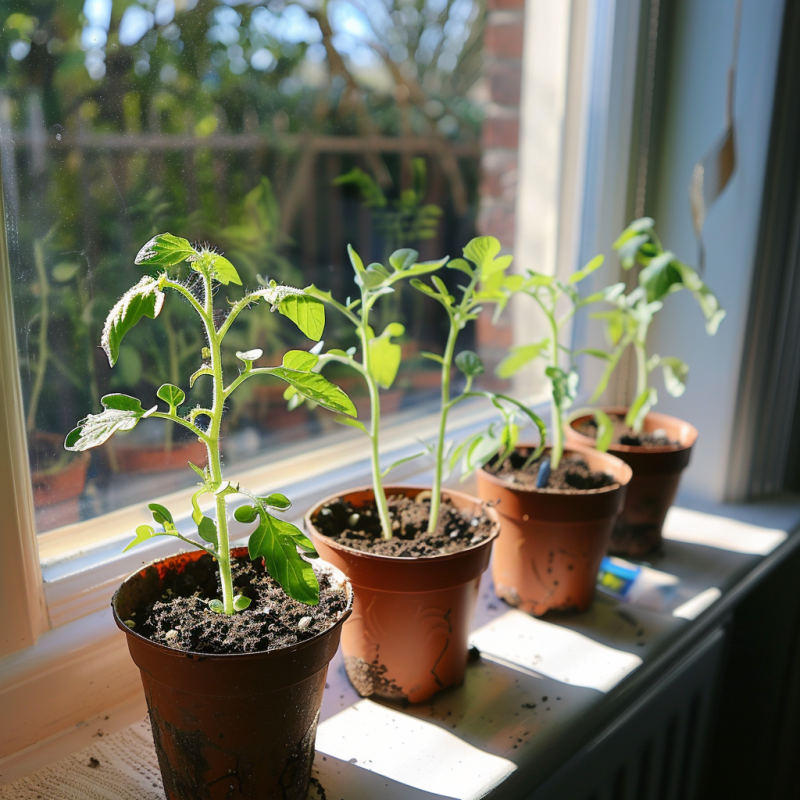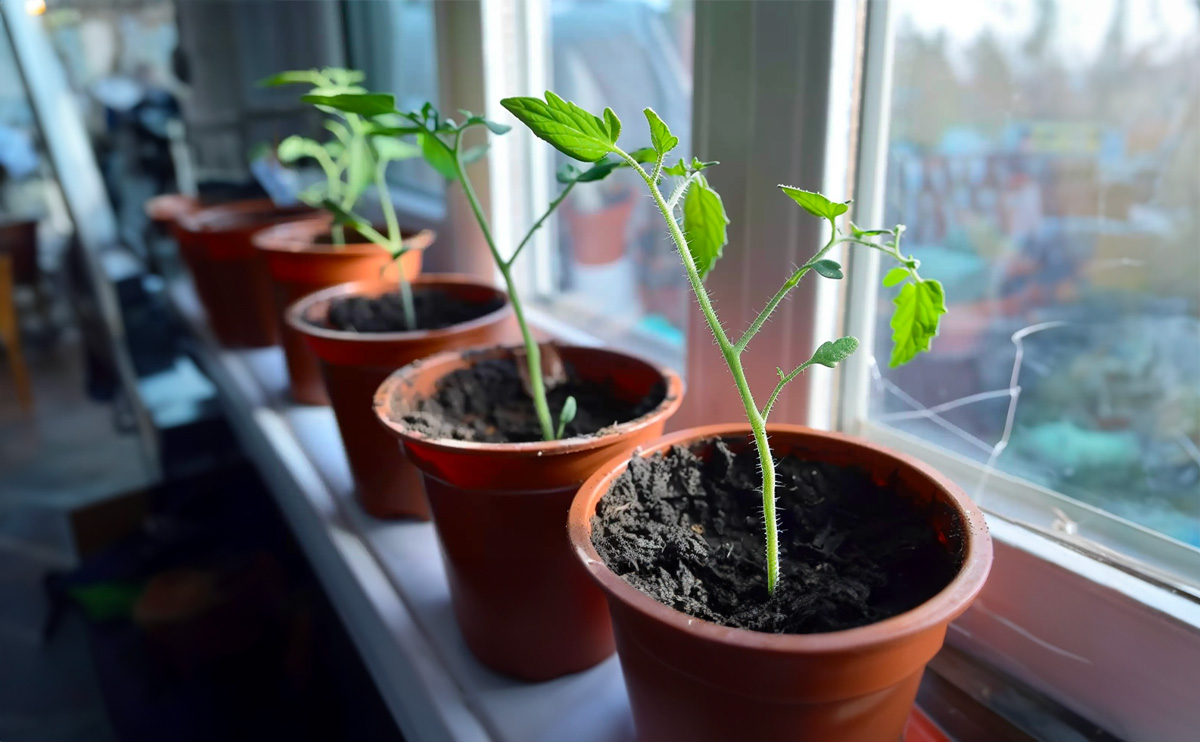As spring unfolds, gardeners across the country nurture seedlings, hoping to cultivate a garden teeming with life and color. However, a common challenge many face is managing leggy seedlings—those elongated, frail plants that seem more eager to lie down than stand tall. Understanding the causes of leggy growth and implementing strategies to counteract it is crucial for ensuring the health and vitality of your garden.
Understanding Leggy Seedlings: Causes and Solutions
Leggy seedlings are characterized by their thin stems and sparse leaves, often struggling to support their weight. This condition detracts from the plant’s overall health and can impact its development and productivity. Let’s explore the primary causes and offer solutions to foster stout, healthy growth.
Optimal Temperature Control Excessive warmth is a frequent culprit behind rapid, weak stem growth. Seedlings thrive in a moderate temperature, ideally around 65°F (18°C). Maintaining this temperature prevents overly rapid growth, encouraging the development of stronger, more resilient plants. Monitor your growing environment closely, using a thermostat if necessary, to ensure conditions remain within this ideal range.
Adequate Spacing Between Seedlings Overcrowding can lead to competition for light, causing seedlings to stretch unnaturally toward the nearest light source. To prevent this, ensure each seedling has enough space to grow without competing for resources. Proper spacing allows each plant to receive ample light, promoting balanced growth and preventing the development of leggy seedlings.
Proper Watering Techniques While seedlings require consistent moisture to thrive, overwatering can lead to weak and elongated growth. Water your seedlings only when the top inch of soil has dried out. This approach encourages the roots to grow deeper in search of moisture, resulting in stronger plants. Be mindful of your watering schedule and adjust based on the soil’s moisture level.
Ensuring Sufficient Light Exposure Inadequate or inconsistent lighting is a significant factor in the development of leggy seedlings. Seedlings need between 12-16 hours of direct light each day to grow strong and healthy. If natural sunlight is insufficient, especially in the early days of spring, consider supplementing with grow lights. Positioning your seedlings in a well-lit area or using artificial lighting can dramatically improve their growth habit and overall health.
Timely Transplanting Seedlings confined to small containers for too long can become leggy due to limited space for root development. Once seedlings develop their first true leaves, it’s time to transplant them into larger containers. This gives them the room needed to expand their root system and supports healthier, more robust growth above the soil.
Maximizing Light Quality for Optimal Growth
One of the most effective strategies to prevent leggy seedlings is to maximize the quality and duration of light they receive. Seedlings stretching towards a light source are a clear sign of insufficient light. To combat this, ensure your plants are placed in a location where they can receive a minimum of 12-16 hours of bright, indirect sunlight each day. If natural light is scarce, especially in the depths of winter or early spring, consider investing in full-spectrum LED grow lights. These can provide the consistent and comprehensive light coverage seedlings need to grow compact and strong. Positioning the lights correctly, ideally just a few inches above the seedlings, can significantly reduce legginess by discouraging excessive stem growth and promoting fuller, healthier development. Regularly adjusting the height of the lights as your seedlings grow ensures they continue to receive the optimal intensity of light without stretching.
Implementing Proper Feeding Practices for Seedling Vigor
Nutrition plays a pivotal role in the development of strong, healthy seedlings. Overly leggy growth can sometimes be attributed to a lack of essential nutrients, particularly in the early stages of development. To foster robust growth, start by incorporating a balanced, slow-release fertilizer into your potting mix before planting. Once your seedlings have established their first set of true leaves, consider a diluted, half-strength liquid fertilizer every two weeks to provide a steady supply of nutrients. This regimen supports vigorous growth without overwhelming young plants with excessive nutrients, which can contribute to weak, spindly stems. Remember, the goal is to encourage a balanced growth rate that produces stout stems and vibrant foliage, laying the foundation for a productive garden as the season progresses.

Detailed Guides for Planting Vegetables, Herbs, Greens & Lettuce, Peppers, and Wildflowers in Your Garden:
At FarmerValley we offer detailed guides for planting vegetables, herbs, greens & lettuce, peppers, and wildflowers. These guides provide step-by-step instructions for planting and caring for your plants, as well as tips for getting the best results. Check our growing guides and plant your own non-GMO garden with confidence.
Planting non-GMO seeds is a great way to enjoy fresh and healthy vegetables and herbs while also knowing that you’re avoiding harmful additives. With these essential tips and top lists, as well as our detailed guides, you’ll be on your way to a bountiful harvest in no time.
Elevate your gardening experience with FarmerValley’s premium seeds! Choose from our wide selection of high-quality varieties to enhance your garden and enjoy a bountiful harvest. Trust in our expertise and start your journey towards a thriving and beautiful garden today.

